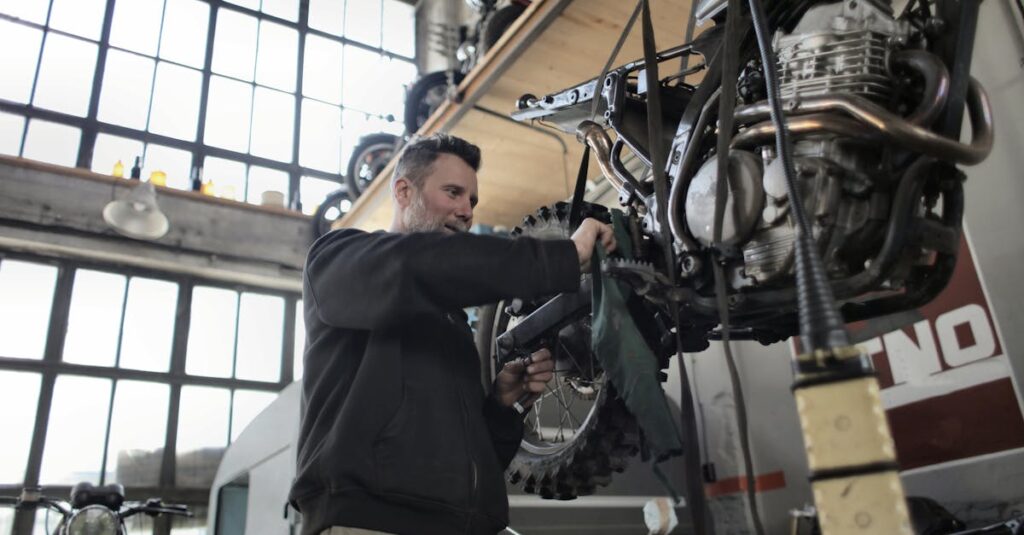Dreaming of hitting the open road on a motorcycle? You’re not alone. The allure of freedom and adventure draws many to the world of motorcycling, but before you can rev up that engine, there’s a crucial question to answer: how old do you have to be to drive a motorcycle? Age requirements vary widely depending on where you live, and understanding these regulations is the first step to ensuring a safe and legal ride.
In the US, each state has its own set of rules, often influenced by safety concerns and local traffic conditions. While some states allow young riders to start as early as 14 with specific restrictions, others require you to be at least 16 or 18. Knowing the legal age isn’t just about compliance; it’s about preparing yourself for the responsibilities and challenges that come with riding a motorcycle.
Legal Age Requirements by Country
Age requirements for motorcycle riders differ across countries. This section details the legal age for several key regions.
United States
In the United States, age requirements for riding a motorcycle vary by state. Some states permit riders as young as 14, often with restrictions such as riding a lower cc motorcycle, daylight hours only, and requiring a parent’s supervision. For instance, in South Dakota, riders can start at 14 with a restricted license. Conversely, states like California require riders to be at least 16. In others, the minimum age is 18. Each state has its own Motorcycle Learner’s Permits policies.
United Kingdom
In the United Kingdom, riders must be at least 16 to operate a motorcycle up to 50cc. At 17, they can ride motorcycles up to 125cc, provided they pass the Compulsory Basic Training (CBT). Full motorcycle licenses are granted at the age of 19 for A2 licenses, which allow riding motorcycles with up to 35 kW of power. Riders need to be 24 to obtain an unrestricted A license, which permits riding any motorcycle.
Australia
Australia enforces a graduated licensing system. Most states require riders to be at least 16 years and 9 months for a learner permit, which includes restrictions like lower cc engines and no passengers. For example, in New South Wales, obtaining a learner’s permit involves passing a pre-learner course. Authorities require riders to hold this permit for a specified period, often around 12 months, before qualifying for the next licensing stage, which usually involves higher engine capacities and reduced restrictions.
Canada
Canadian provinces have varied age requirements for motorcycle licenses. Generally, riders can obtain a learner’s permit at 16. For instance, in Ontario, the graduated licensing system starts with an M1 license available at age 16, restricting riders to specific conditions such as no nighttime riding and zero alcohol tolerance. After a minimum period, usually around 60 days, riders progress to the M2 license, which is less restrictive but mandates another waiting period before acquiring a full M license. In Quebec, the minimum age for a learner’s permit is 16, but with stringent rules on training and supervised riding.
Types of Licenses for Motorcycle Drivers
Understanding the types of licenses for motorcycle drivers is essential for ensuring you meet the legal requirements for riding. Here are the key categories:
Learner Permits
Before getting a full motorcycle license, most states require a learner permit. Learner permits allow novice riders to practice under certain conditions. For example, in California, a learner must wear a helmet, cannot carry passengers, and cannot ride at night. In Texas, learners can only ride under the supervision of a licensed instructor or experienced cyclist. Age requirements for learner permits generally start at 15 or 16, with necessary completion of a written test and motorcycle safety course.
Full Motorcycle Licenses
A full motorcycle license allows unrestricted riding. Eligibility typically includes holding a learner permit and passing both a written and skills test. In Florida, applicants must be at least 16 and should have had a learner permit for at least one year with no traffic convictions. In New York, an applicant must pass a road test and be at least 18, or 17 with a driver education certificate. Additional classifications exist in some states, differentiating between engine sizes and types of motorcycles. For instance, a Class M license in Georgia is required for operating any type of motorcycle.
Additional Requirements and Restrictions
Beyond age, riders must meet other criteria for motorcycle licenses in various regions.
Safety Training Courses
Safety training courses often boost rider skills and knowledge. Many states, like California and New York, require new riders to complete a motorcycle safety course. These courses teach basic maneuvers, traffic laws, and accident prevention. For instance, the Motorcycle Safety Foundation (MSF) offers courses accepted nationwide. Graduating can sometimes waive on-road test requirements.
Supervised Riding
Supervised riding allows learners to gain experience safely. Learner permit holders frequently need supervision from a fully licensed rider. For example, in Texas, riders under 18 must ride under the supervision of an adult with a motorcycle license. Supervision ensures that new riders understand traffic dynamics and improve their riding confidence.
Age-Specific Restrictions
Age-specific restrictions aim to protect younger riders. Riders under a certain age often face curfews and passenger restrictions. In Florida, riders under 21 must complete a Basic Rider Course and can’t carry passengers. These restrictions minimize risk by limiting exposure to high-risk situations until the rider gains more experience.
Implications of Underage Driving
Driving a motorcycle before reaching the legal age can have serious implications. It’s crucial to understand these consequences to discourage underage riders.
Legal Consequences
Underage motorcycle driving leads to severe legal penalties. Authorities impose fines and impound vehicles when riders are caught without proper licensing. Repeat offenders face harsher penalties, including possible jail time. Parents or guardians may face legal repercussions if they’re found complicit. Insurance companies deny coverage for accidents involving underage riders, leaving families financially responsible for damages and injuries.
Safety Risks
Safety risks increase significantly for underage riders. Inexperienced riders lack the skills needed to navigate complex traffic situations, leading to higher accident rates. Statistics from the National Highway Traffic Safety Administration show that younger riders have a higher likelihood of serious injuries in crashes. They often underestimate risks, leading to behaviors like speeding and reckless riding. Proper training and age-appropriate education are critical to ensuring rider safety and reducing overall accident rates.
Conclusion
Understanding the age requirements and regulations for motorcycle driving is crucial for safety and compliance. Different countries have specific rules, and it’s essential to be aware of them to avoid legal issues and ensure a safer riding experience. Proper training and education play a significant role in preparing young riders for the road. By adhering to these guidelines, we can help reduce accidents and promote responsible motorcycle riding for all ages.
Frequently Asked Questions
What is the minimum age to drive a motorcycle in the US?
In the US, the minimum age to drive a motorcycle varies by state but generally ranges from 16 to 18 years old. Some states allow younger riders to obtain a learner’s permit with restrictions in place.
What are the age requirements to ride a motorcycle in the UK?
In the UK, you must be at least 17 years old to ride a motorcycle up to 125cc with a provisional license. For larger motorcycles, you need to be at least 19 years old and pass additional testing.
How old do you have to be to legally ride a motorcycle in Australia?
In Australia, the minimum age to ride a motorcycle varies by state, but you generally need to be at least 16 years old to obtain a learner permit. Some states may have different age requirements for different types of licenses.
What is the legal age for motorcycle riding in Canada?
In Canada, the minimum age to ride a motorcycle is generally 16 years old, although this can vary by province. Riders usually begin with a learner permit before obtaining a full license.
What types of licenses are available for motorcycle drivers?
Motorcycle drivers can obtain different types of licenses, including learner permits and full licenses. Learner permits often come with restrictions, such as limited riding hours and the requirement to ride accompanied by a fully licensed rider.
What are the consequences of underage motorcycle driving?
Underage motorcycle driving can lead to legal consequences such as fines, vehicle impoundment, and potential jail time. Riding without proper licensing may also result in increased penalties.
Why is proper training important for motorcycle riders?
Proper training is crucial for ensuring rider safety, reducing accident rates, and preventing serious injuries, especially among younger, less experienced riders. Training programs provide essential skills and knowledge for safe riding.
Are younger riders more prone to accidents?
Yes, statistics show that younger, less experienced riders have higher accident rates and are more prone to serious injuries. This emphasizes the importance of age-appropriate education and training.
What is the role of education in motorcycle safety?
Education plays a vital role in motorcycle safety by teaching new riders the skills and knowledge they need to ride safely. Age-appropriate training can significantly reduce the risk of accidents and improve overall rider safety.


